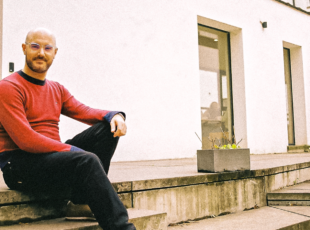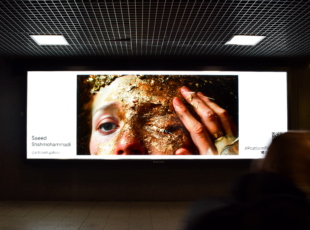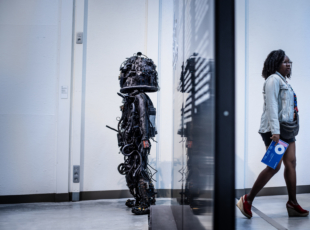Stéphanie Roland, excavating the works of the future
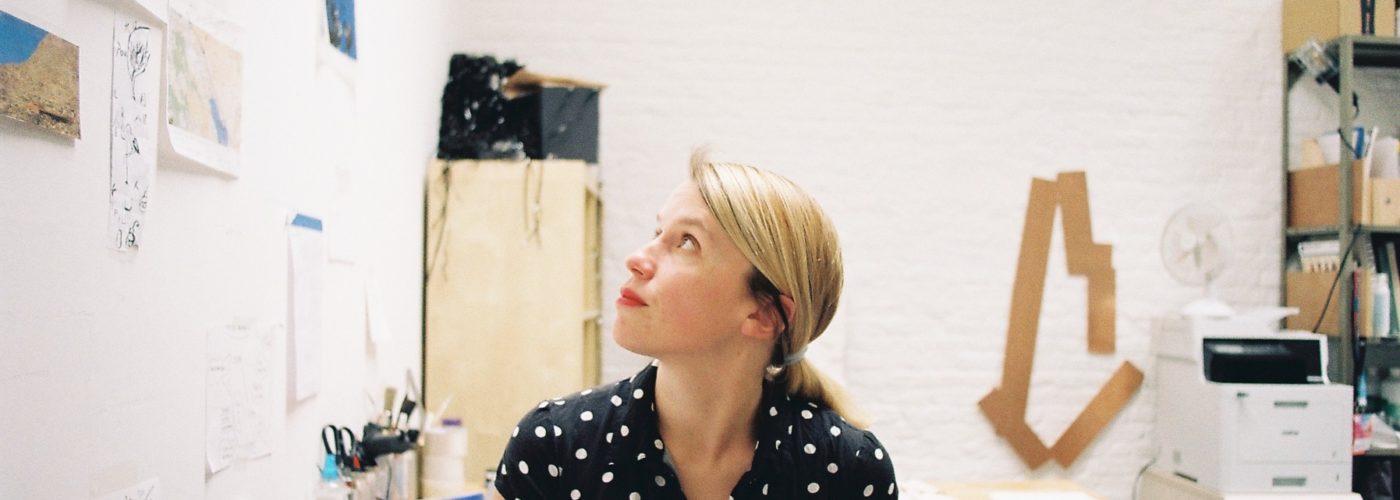
Article author :
A visual artist and filmmaker, the work of the Belgian Stéphanie Roland is moored between the documentary and the imagination. She draws inspiration from various fields of science, from ecology to geology and the cosmos. Owing to an obsession with forecasts, highly telling of the way our societies operate in the present, her productions interrogate (in)visible structures and the notion of temporality.
A few short pedal strokes from the Brussels-Midi train station, in the Anderlecht district, we push open the door to POELP. A creation and experimentation space for artists which Stéphanie moved into a little over a year and a half ago. Her ‘safe space’, as she likes to call it. On the walls are a few photographs, pieces of geographical maps and various sketches. When she is not reading papers produced by the Massachusetts Institute of Technology (MIT) to stay abreast of the latest scientific developments, she pins up a part of her reflections to keep them physically within arm’s reach. ‘I also have masses of notebooks in which I collect the things and places which have caught my attention’, she tells us. ‘At some point, occasionally after several years of annotations and reading, these ideas intertwine and the planets finally align’. Following an impulse, often an intuition, Stéphanie then launches into a new process of artistic creation, these days more likely to involve the audiovisual.
Self-taught in many styles, it was with photography that Stéphanie Roland first of all experimented. She remembers her first darkroom induction courses from when she was just thirteen. A child, but already fascinated by the phenomenon of revelation. Originally from Hainaut, she obtained a diploma from La Cambre, in Brussels, before moving to Berlin to study at the University of the Arts (UDK). It was there that she developed her current artistic practice, before returning to settle in the Belgian capital. Initially her works remained photographic. Stéphanie endeavoured to depict quite formal subjects. Many portraits touched upon themes related to the passing of time, family, origins. A dabbler in spite of herself, Stéphanie rapidly felt trapped within this single medium. ‘Photography is a fabulous means of expression which many people use wonderfully, but it was in video that I found a way of including many other artistic practices I wanted to try out. I love creating with a large diversity of mediums which can speak to one another.’
Today, the narratives Stéphanie Roland devises demand that she adopts a multidisciplinary approach. Photography, video, screen printing, sound, fabric, artificial intelligence and new technologies. Stéphanie makes it clear that whilst she presents herself as a visual artist, she prefers the title filmmaker to that of director. In the French language, the terms referring to the professions are ‘réalisateurice’ and ‘cinéaste’, but the anglophone nuances are a little more specific. ‘Being a “director” means managing huge teams over the course of large-scale productions. Whereas “filmmaker” implies more a notion of bricolage and artisanship with the audiovisual which I very much identify with. Even if I do occasionally create immaterial works’.
During our conversation, Stéphanie for that matter returns several times to the conceptual art she has a particular fondness for. This art movement commenced in the 1960s and marked a break between modern art and contemporary art. A new range of possibilities then opened up: the object of art became separate from the work of art, and it is the idea or the concept which takes precedence. ‘My works often touch upon the future and immaterial things such as financial products or phantom islands, but their impact in the world is real and I represent them by media which are intrinsically linked to their materiality. It’s true that I can become very enthusiastic when I come across a catalogue of immaterial works in a museum, for example, but I also know that I couldn’t be a conceptual artist. I love the fact that works are considered art solely by the mental representation we make of them, but there comes a point where the longing gets me itching to materialise them’.
I think I would struggle to manage the materiality art techniques such as sculpture require. I like the idea that I could walk around with my whole artistic career on a USB stick.
Rather a minimalist at heart, Stéphanie Roland discloses a notable aspect of her way of thinking: ‘Creating films demands a massive amount of work. From the concept and the critical thinking you wish to add onto it, including the writing of the narrative, location scouting which sometimes takes place abroad, looking for participants and actors, the filming, the editing, the special effects. What I like most about video, is that at the end of the road, this mountain of work is stored in a file of a few gigabytes. I think I would struggle to manage the materiality art techniques such as sculpture require. I like the idea that I could walk around with my whole artistic career on a USB flash drive’.
Voyage voyage
Another prevailing dimension in Stéphanie Roland’s artistic approach: a reflexive gaze focused on elsewhere. ‘With my parents we did very little travelling around in Belgium, but I remember our adventures in Eastern Europe, or in the United States. My father is from Micronesia* and even though I have never been there, I have also been immersed in his stories of elsewhere. That is to say that I have always been inspired by journeys, holidays, downtime, what that represents for people’. The visual artist is obliged to travel around on a very regular basis, whether it be taking part in artist residencies, or when her work is presented at international festivals or major museum institutions: the Louvre Museum, the Kampala Art Biennale, the Belfast Photo Festival, the Los Angeles Month of Photography, the Venice Biennale, etc. But today she tries to travel for reasons other than the mass tourism she wishes to leave behind, often by walking, by the way.
She continues by referring to a book she has a lot of time for, Pierre Bayard’s How to Talk About Places You’ve Never Been. She also brings up Dennis Oppenheim, a leading light of Land Art, the contemporary art movement which uses natural settings and elements, several of whose works disappear owing to erosion or climate events. But the Belgian artist also imagines darker odysseys, as in her creation Science-fiction Postcards. At first glance these postcards seem black and very opaque. But when they are touched or placed near a heat source, thanks to a thermochromic ink, an image reveals itself. Satellite images of islands which are destined to disappear over the coming centuries owing to the rise in sea levels. On the back a postmark indicates the dispatch date in a distant future. ‘I don’t do scientific pedagogy, but occasionally the sciences are story vectors. For this installation, I worked with geographers and global warming forecasting programmes.’ A work perhaps far from science fiction which you will have the opportunity to see during the Capture #2 exhibition, at the Pavillon, in Namur, from September 23, 2023, to January 14, 2024. We won’t say any more about it for now, but Stéphanie Roland will certainly present other of her works there.

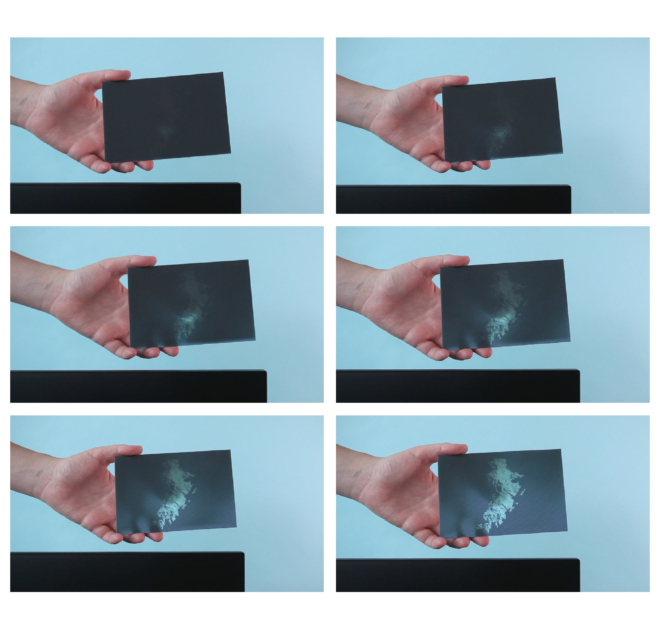
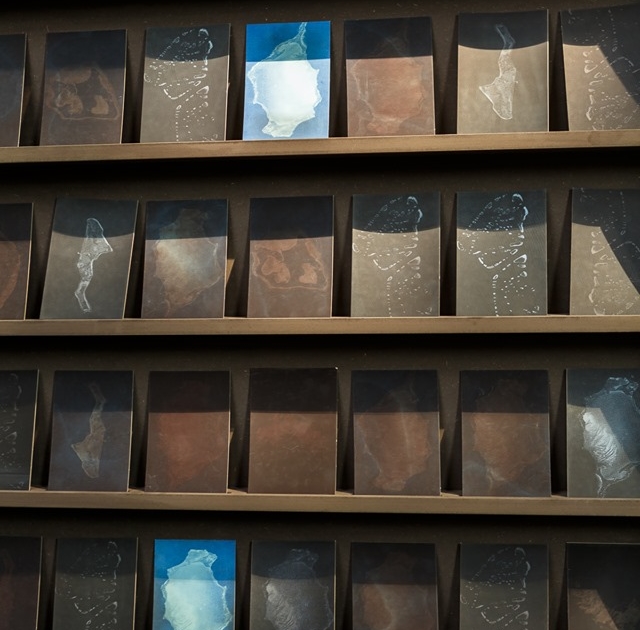



Fault zone
At the present time, not too distant from science fiction, the artist is working on a feature-length documentary project focusing on the San Andreas Fault, located in California. The San Andreas Fault system has recorded numerous earthquakes, but it is without a doubt that of 1907 which stays in the memory, given the human losses and material damage. ‘It is my first feature-length project, called ‘Drop! Cover! Hold on!’ I have for that matter just received a grant for the writing and location scouting from the Gsara non-profit association, which supports the production of cinematographic works. With this film, I wish to talk about geology, but also about the crack and its metaphorical meaning. The major film studios, for instance, are located on the San Andreas Fault. It is a project in which I aim to invert the usual hierarchy between the protagonists of our Western films’.
Scientists who are not considered to be essential, minerals with the ability to speak, bit players who become major actors and vice versa. Stéphanie Roland intends to make this film a fault zone, with interruptions, with discrepancies between sound and image. ‘I don’t wish to appropriate scientific material without being a scientist myself. It’s the aesthetic and the narrative which speak to me, but I don’t want my work to remain within the realms of contemplation’.
* One of the three traditional major regions of Oceania which currently consists of the federated states of Micronesia, the Marshall Islands, Kiribati, the Mariana Islands, Palau and Guam.

This content is offered within the scope of Propulsion by KIKK, a digital awareness project for and by women.
A story, projects or an idea to share?
Suggest your content on kingkong.


